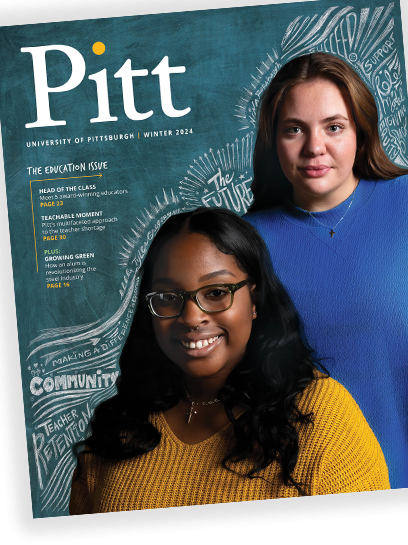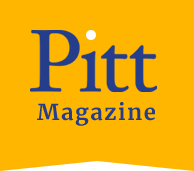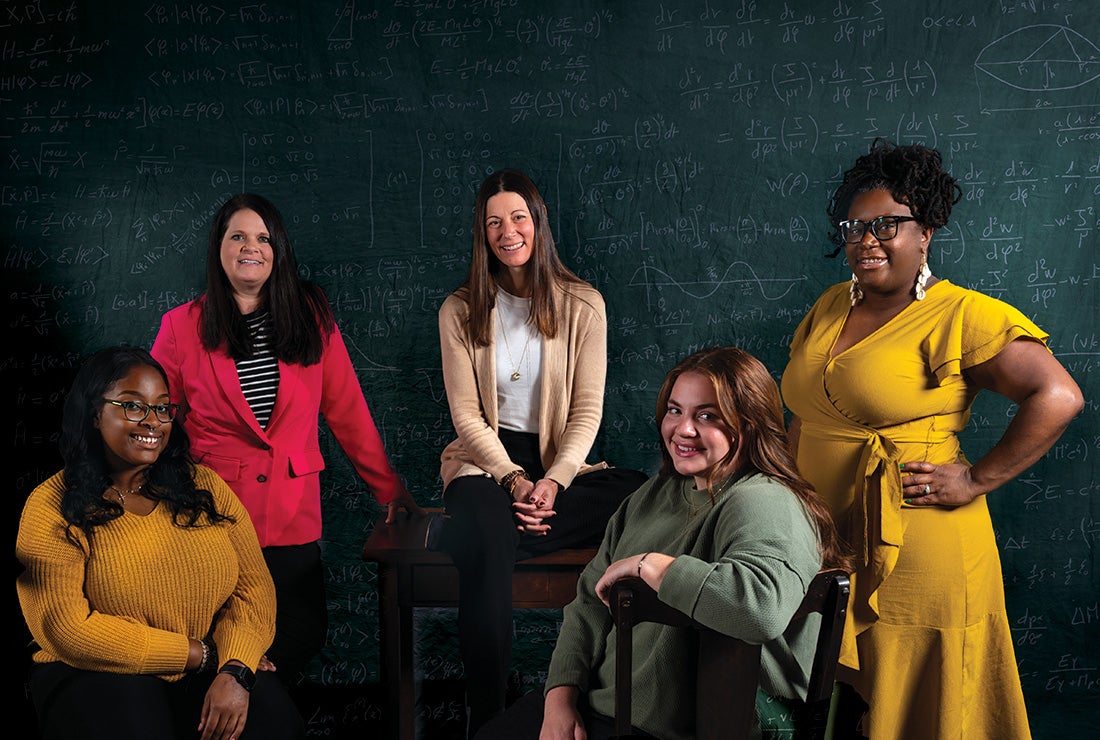
Nina Rorabaugh is in her final year of high school outside Akron, Ohio, and she — along with every other member of the Class of 2021 — is growing tired of answering the same question over and over again.
You know the one: “What are you going to do after graduation?”
Each time she hears it, Rorabaugh smiles politely and recites her well-rehearsed response. She’s going to the University of Pittsburgh because she’s planning to be a physician someday and, after researching colleges, she knows Pitt — with its elite medical school — will provide an excellent foundation in the health sciences.
Then Rorabaugh preemptively addresses their inevitable follow-up question:
“I’m not going to be a teacher.”
To those who know her, it’s a surprise. Pitt’s School of Education is ranked among the country’s top 10% of teaching programs, and Rorabaugh’s passion and experience would likely make her a top applicant. Since fifth grade, she’s volunteered in special education classrooms where her older brother, Walker — who has autism spectrum disorder and learning challenges — attends school. She also leads the student ministry at her church. Much of her life revolves around helping others learn.
But Rorabaugh has done the calculations. Classrooms, she says, are increasingly challenging places to work and, even if she gets a decent starting salary, she’ll still struggle to pay her student loans. She doesn’t want either kind of stress. Better to focus on health care.
At universities across the country, an increasing number of students are coming to similar conclusions, adding to a dire new reality for public schools: a national teacher shortage.
Before 2020, shortages mostly affected the country’s under-resourced districts. COVID-19 changed that, splitting existing cracks in the educational system wide open. In the past four years, funding disparities among school districts have grown, teacher autonomy has continued to shrink and classroom curriculums have become hot-button subjects in politics and the media. Those new stressors, when added to long-looming concerns around teacher salaries, school violence and student behavior, proved to be the breaking point for thousands of educators.
A U.S. Government Accountability Office report estimates that between 2019 and 2021, the nation’s public schools lost 7% of its workforce — more than 230,000 teachers. The U.S. Department of Education (DOE) reports that 27% of those schools have multiple teacher vacancies. The numbers among teachers of color are even more alarming: Less than 1 in 5 educators in the U.S. are Black or Latino, and nearly 60% of districts where students of color are in the majority are understaffed.
Meanwhile, the number of certified teachers coming out of universities is in freefall. In Pennsylvania, for example, the DOE issued just over 4,000 teaching certificates in 2021, down from 16,000 a decade ago and not nearly enough to fill the state’s vacancies.
In the tiny New Brighton Area School District in Beaver County, Superintendent Joseph Guarino (EDUC ’09G) was forced to cut the high school French program after a teacher resigned and not a single application was received to replace her. Forty miles south, at the sprawling Fox Chapel Area School District in Allegheny County, Superintendent Mary Catherine Reljac (EDUC ’16G) says she signs emergency certifications for substitutes nearly every day of the week. And Tracy Vitale (EDUC ’09G), superintendent of Seneca Valley School District in Butler County, adds: “We’re left competing with each other for teachers, especially at the high school level. They’re just not there.”
In Pennsylvania and across the country, the teacher shortage is a complex crisis. In the absence of an easy fix, Pitt’s School of Education, as it’s done throughout its 113-year history, has stepped in to ensure a new generation of highly qualified teachers are ready to get — and stay — in the classroom. To do so, the school has relaunched its integral undergraduate teacher education program and established multiple programs to recruit and retain educators of color.
The ultimate goal is to create a larger, more diverse, more reliable Pitt-to-classroom pipeline that benefits both new teachers and their students. But to get there, bright minds like Rorabaugh’s must be convinced teaching is a career option worth pursuing.
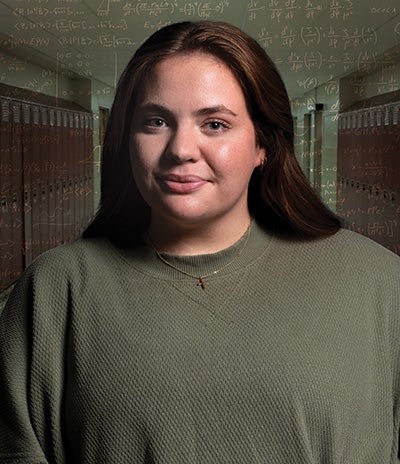
Changing lanes
By the end of her first year at Pitt, Rorabaugh was questioning her high school calculations, wondering if medicine was really her best career choice. She was putting an extraordinary amount of time and energy into her science classes, but they weren’t giving her a sense of satisfaction — they simply left her exhausted.
When she wasn’t studying, she started researching other majors — psychology, speech pathology, linguistics — and other universities. After all, why pay out-of-state tuition at Pitt if she wasn’t going to pursue a lucrative career in medicine, she reasoned.
Then she learned about Pitt Education’s undergraduate teacher education program and felt a familiar tug on her heartstrings. She thought about the teachers who supported her brother, Walker, through his school years. One stood out — an elementary-school teacher who put an extraordinary amount of time and effort into Walker’s education and ensuring he felt like part of a supportive community. The Rorabaughs even came to regard her as part of the family. “She just poured so much care into him for so long,” recalls Rorabaugh.
Looking to make that kind of difference — and despite her previous reservations — Rorabaugh transferred into Pitt’s teacher education program and became part of its inaugural cohort of students.
The program allows students to pursue a certification in secondary English, math, science or social studies, or a pre-K-12 certification in world languages or special education. She’s on track to receive the latter in December 2024.
“I still feel the same way about the challenges — I know it’s going to be hard,” admits Rorabaugh. “But if I get to teach somebody's child, and love them as a teacher, and show them that they can actually succeed and make progress and grow, then that's what really matters.”
It helped that Pitt made the transition seamless: Rorabaugh won’t lose any time or money on the way to earning her degree. And that, says Michelle Sobolak, is by design.
Sobolak (EDUC ’03G, ’08G) is the director of Teacher and Professional Education at Pitt and part of the team tasked with reimagining the program. From the outset, affordability, access and equity were top priorities.
Since the 1980s, when the original undergraduate program was discontinued, students who wished to earn a teaching degree from Pitt have done so through a yearlong graduate program. While that highly regarded program still exists and has undergone a few tweaks of its own, Sobolak acknowledges it isn’t always ideal or economically feasible for students like Rorabaugh to pay for two degrees just to enter a classroom.
The revamped undergraduate program, launched in fall 2023, ensures students’ eligibility for certification without requiring an extra year in graduate school, which will shrink student loan debt and get more teachers into classrooms faster. And because students can’t officially enter the education program until the fall of their junior year, it puts undecided students like Rorabaugh on equal footing with those who declared their career intentions early. It also eases the transition for transfer students coming to Pitt from regional campuses or community colleges.
Perhaps most importantly, the two-year undergraduate program exposes students to real classrooms earlier and more often. Before officially entering the education program, Rorabaugh had already observed a special education teacher in action.
“They get to see the intense work that goes into being a teacher,” says Sobolak. “And those early experiences help them understand if this is the field they want to be in.”
Next year, as Rorabaugh and her cohort begin their senior year and move into the student-teaching portion of the program, they will be assigned to a local school and get a mentor teacher. But each student will also work with a teaching coach — a Pitt Education employee whose job is to help students unpack the lessons imparted by their mentor teachers and implement the strategies learned in their coursework, including the creation of just communities.
As Sobolak and the team reimagined teacher education at Pitt, they very purposefully centered equity, justice and inclusion at its core. Today, in addition to students taking classes on the history of education, they have the option to explore educational equity through one-credit seminars and workshops.
“We want our students to understand how the system of education has worked in the United States, who it's privileged and who it hasn't, and how we can be change agents for the betterment of all students,” says Sobolak.
That historical context, along with the expanded preparation time and coaching, should also help with retention.
The first two years of teaching are notoriously difficult, as new educators learn the culture of their school, develop lesson plans and deal with day-to-day challenges in the classroom. Most states, including Pennsylvania, require a two-year induction period of mentorship and training to acclimate new hires and ensure success. Nevertheless, thousands of teachers burn out in that span.
And, as the post-COVID resignation wave proved, those first two years aren’t the only time teachers need support. They require it throughout their careers.
Fully preparing students before they enter the workforce is half the battle, says Khirsten L. Scott, a Pitt Education assistant professor and the director of the Western Pennsylvania Writing Project (WPWP). She says it’s equally important to continue that support by creating communities that extend outside the classroom to bolster teacher morale. For example, WPWP, which is celebrating its 40th anniversary in 2024, provides teachers with summer teaching institutes and professional development workshops to sharpen their skills and spark curricular innovations. But it also gives participants a community of teachers from different generations with whom they can commiserate, ask for advice or celebrates success.
“Retention is a project that starts the day a person decides they want to be a teacher,” says Scott. “It’s not when you get the job, it’s not when you’re fed up with the job, it’s the day you say you want to be a teacher.”
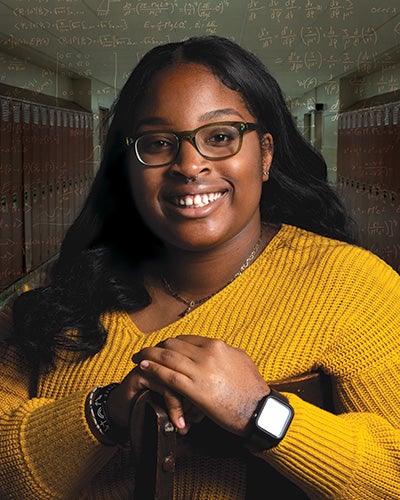
Role Models
Unlike her classmate Rorabaugh, who hesitated in her career choice, Tyler Gregory never wavered in her decision to become a teacher. While her friends daydreamed about being pop stars and firefighters, she imagined what it would be like to decorate her own classroom.
“I was like, ‘what other career path?’” Gregory says with a laugh. “I always just wanted to give back to kids. I feel like education is the foundation for everything.”
As she grew and became more aware of the world around her, Gregory’s desire to teach also evolved. Before choosing Pitt, she attended public schools in Baltimore County, Maryland, where 60% of students are Black, Latino or multiracial, but only a handful of teachers identify as such, and Gregory didn’t have class with any of them. It wasn’t until she took an Africana Studies class during her first year at Pitt that she encountered a teacher who looked like her. She felt an immediate sense of ease and a connection she hadn’t even known she’d missed out on in high school.
Suddenly, as a Black woman and first-generation American (her family comes from islands in the Caribbean), Gregory grasped the added significance for her career choice. She believed her very presence in a classroom could help engage her students of color. Sure enough, multiple studies reveal that Black students who have Black teachers experience better behavioral outcomes and are more likely to graduate high school and attend college.
“The teachers that I did have are wonderful people who helped me get to where I am today,” says Gregory. “But I feel like there’s a different bond with a teacher of color. We’re able to talk about certain topics and acknowledge certain things others wouldn’t necessarily understand.”
But as the teacher-of-color shortage grows, fewer students in this country are having that experience. It’s a grave concern to Cassie Quigley, chair of the Department of Teaching, Learning and Leading and professor of science education, who focuses on outcomes for girls and students of color.
“It's no secret that students of color often experience schooling in different ways than their white peers,” says Quigley, “If that experience was oppressive and isolating, what is the pull back into those physical spaces?”
Unfortunately, getting teachers of color like Gregory into schools is a pressing national problem, including in Pennsylvania. According to a report from the education policy nonprofit Research for Action, only 6% of Pennsylvania’s education workforce is made up of teachers of color, and the racial disparity among teachers and students is more than twice the national average.
One of the Pitt programs seeking to change that reality in Western Pennsylvania is Genius, Joy and Love, a monthlong summer program that brings rising high school seniors and first-year college students from Pittsburgh Public Schools (PPS) to Pitt’s campus for a mini-college experience that encourages them to consider careers in education.
Participants have the added bonus of qualifying for the Advancing Educators of Color scholarship, which provides additional funds to students who train to be educators, pursue their teaching certificates and teach at PPS for at least five years after graduation.
The best path to solving any educational crisis, Quigley believes, is made through cooperations between higher education and public schools — just like the Genius, Joy and Love program. That’s why she teams up with local districts and teachers for her own research and why she started Pitt Education’s Superintendent Thought Partners group. The group is made up of 12 local superintendents who provide guidance on everything from program development to curriculum innovation. Their insights help the school address education’s current needs, and then send graduates, armed with solutions, into the workforce.
“I really feel that the way we solve any problem is through collaboration,” Quigley says.
Pitt Education's collaborative and inclusive philosophy resonates deeply with Rorabaugh. At her high school, collaboration and inclusion weren’t just ideas, especially when it came to her brother, Walker. Despite his challenges, his teachers not only nurtured his education, but they also worked to ensure that he felt supported, included and a valued member of the student body — efforts that surely made learning easier for Walker and had a profound effect on his sister, too.
For Rorabaugh, one particular moment stands out. Walker turned 20 years old in the early days of the COVID-19 pandemic. He was already feeling isolated, and not being able to celebrate with his school family made it all the worse. In an attempt to cheer him up, Rorabaugh used the school district’s Facebook page to organize an impromptu drive-by birthday party.
What then took place exceeded all her expectations — more than 300 people steered their cars past her family’s house on Walker’s birthday, horns honking.
“I still cry just thinking about it,” says Rorabaugh. “It was so sweet, and that stemmed from our school community fostering an inclusive environment.”
Upon graduation, Rorabaugh and her classmates will have the tools and support to take those life lessons, honed at Pitt, into their own classrooms, where they will join the league of educators making a difference in students’ lives.


